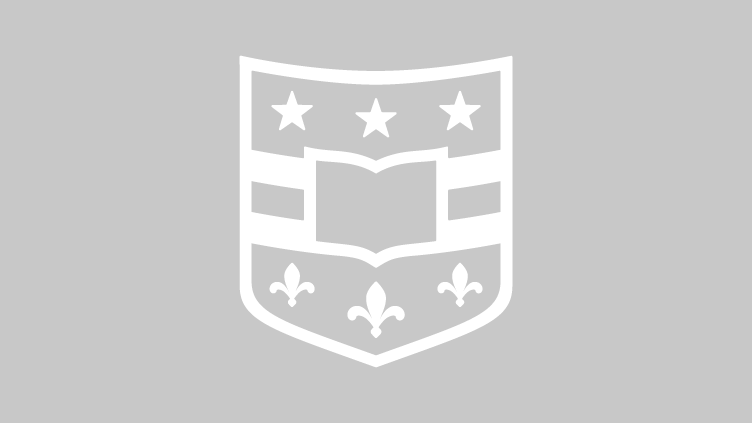Future head of Missouri Botanical Garden tours campus
Peter Wyse Jackson, PhD (left), who has been appointed to succeed Peter H. Raven, PhD, the Engelmann Professor of Botany, as president of the Missouri Botanical Garden, visited the Danforth Campus March 3 to meet biology department faculty and to deliver a seminar on international efforts to slow or halt the loss of biodiversity.
Tyson ‘living building’ featured on NPR Science Friday
The Tyson Living Learning Center at Washington University in St. Louis has been called one of the greenest buildings in the U.S. Green technologies behind the building are the focus of a National Public Radio Science Friday news video and an NPR radio discussion broadcast live from St. Louis March 12.
$14 million in stimulus funds to Washington University for construction
The School of Medicine has received a $14.3 million grant through the American Recovery and Reinvestment Act to expand its high-powered data center for genomics. The facility’s sophisticated computer networks store massive amounts of genomic data used to identify the genetic origins of cancer and other diseases.
WUSTL to host summer science camp for disadvantaged middle schoolers June 20-July 2
Washington University will host its fourth ExxonMobil Bernard Harris Summer Science Camp June 20-July 2 for more than 45 St. Louis-area disadvantaged middle schoolers. The camp is a free, two-week academic residential camp designed to boost middle school students’ skills in math and science and their interest in related careers as well as introduce them to college life. Applications are being accepted through April 2.
$9 million research grant awarded to WUSTL Earth and Planetary Remote Sensing Laboratory
The Earth and Planetary Remote Sensing Laboratory has received a grant of $1.8 million per year for the next five years to extend and improve the Geosciences Node of the Planetary Data System, a distributed data system that archives and distributes planetary data from space missions.
Emerging tick-borne diseases: a domestic ecological mystery
A new test allows scientists to discover whether ticks are carrying disease-causing bacteria and which animals provided their last blood meal. Results suggest three emerging diseases in the St. Louis area are carried by lone star ticks feeding on record-high populations of white-tailed deer.
Confidence is key to gauging impressions we make
The gift of “seeing ourselves as others see us” comes in handy when judging how we’ve made a first impression. Yet many come away with little or no clue about how that first impression was perceived. A new study suggests confidence is a key indicator of how well we’ve assessed impressions left behind.
Engineers receive annual alumni awards
Seven alumni of the School of Engineering & Applied Science were honored for career achievement at the annual awards dinner Feb. 18.
Inspiring engineers
Students, faculty and alumni from the School of Engineering & Applied Science participate in the WUSTL chapter of Engineers Without Borders Service Project Day rehabbing a home in St. Louis’ North Grand Neighborhood. The project to help develop affordable housing was part of Engineers Week: February 14-20, the school’s week of special events to inspire current and future engineers.
St. Louis floodplains at risk from radioactive landfill, says WUSTL geologist
St. Louis floodplains are in danger of contamination from radioactive wastes dumped years ago at a landfill in North St. Louis County, according to Robert Criss, Ph.D. professor of earth and planetary sciences in Arts & Sciences at Washington University in St. Louis.
Older Stories
